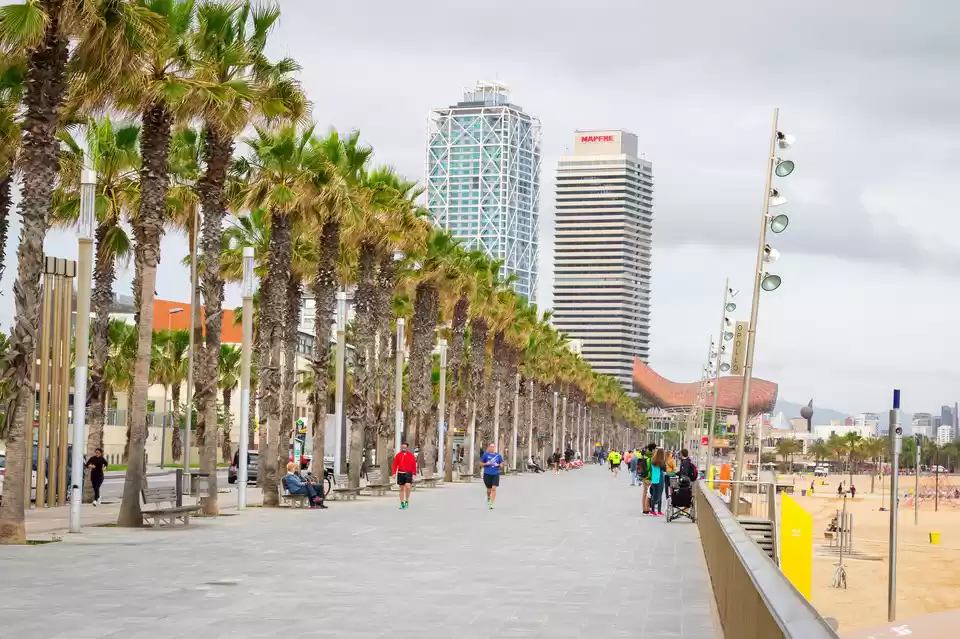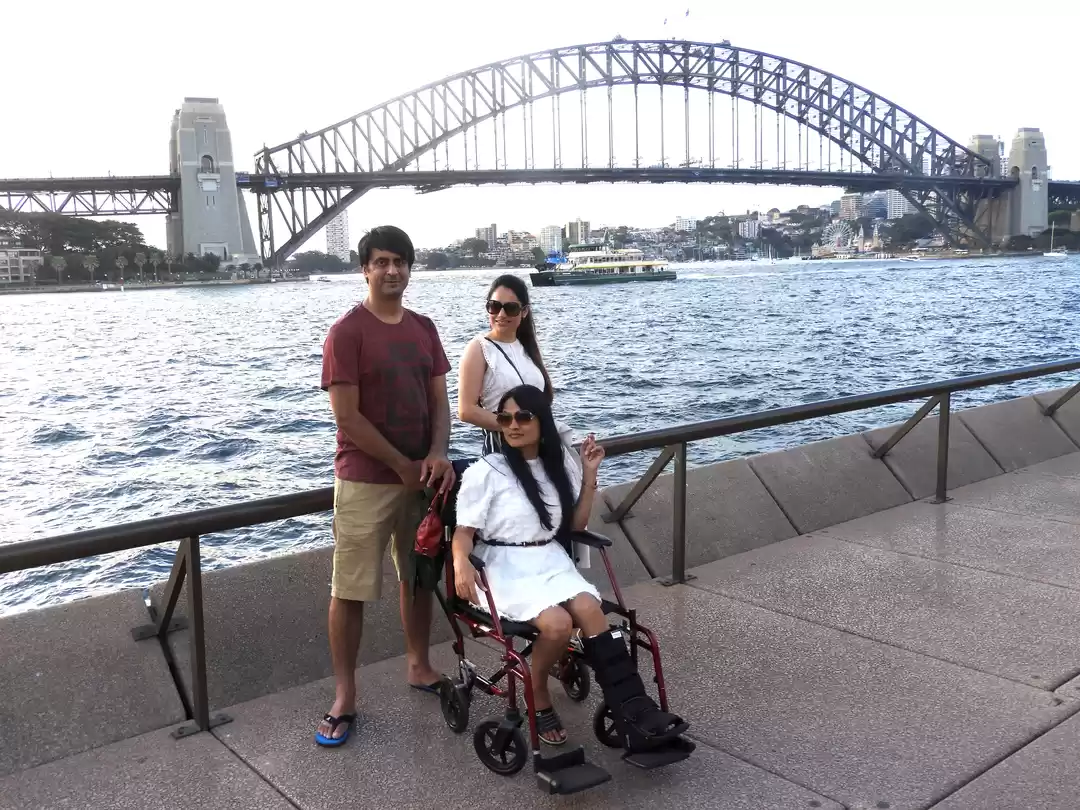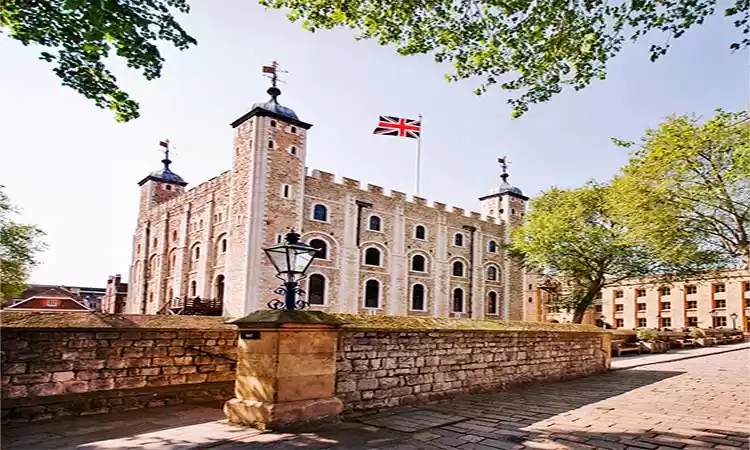
I was standing at the curb, waiting for the cab to pick me up for the airport. Overflowing with holiday vibes, I could feel the warm sun charging my body and soul for the fun-filled ordeal that lay ahead. As I waited for the car, the morning hues of the surroundings kept me company. The occasional slow breeze swayed the trees gently, making them dance and celebrate my much-awaited break. I looked across the street and noticed a fast-paced man walking with a stick.
Dark glasses covered most of his face. His stick swayed left and right, checking for hindrances in his path by touching the ground on each side with every step. I was still gazing at his swift walk, when my eyes caught a puddle of mud a few feet ahead of him. In a flash, my heart was trapped in a dilemma. Should I scream and warn him or should I let his stick discover it? Before I could react, his stick had missed it. The man, steady in his gait, stepped right in the puddle. As inertia pushed him forward, he moved to take another step, only to stop mid-step realising what had happened. He spent the next few seconds assessing the situation, before starting to walk again.

Resting in my flight seat, I couldn’t let go of these images. I kept thinking that there are so many people who are unable to see a side of nature that touched my heart while I was standing at the curb. An ordinary trip ordeal for me involves running across aisles at the airport and quickly skipping through the crowd but it isn’t so for someone in a wheelchair. I would stop at an attractive eatery and start ordering after going through their menu. But a person who is blind can’t do that unless a menu is available in braille. Travelling for those who are specially abled is never the same as it is for someone like me. And it is sad how so many places still fail to incorporate accessible tourism.
Destinations accommodating to people who are specially abled still make the news. It is rather demeaning, in my humble opinion. We’re living in a futuristic society today and facilitating all kinds of tourists should be standardised across all modes of travel and at tourist spots. The need of the hour is to bring in stringent laws that mandate the availability of special services for people who are differently abled, and not celebrate its introduction as the next big thing.
Accessible tourism is an initiative to make travel and tourism convenient for people with disabilities and access needs, including older and less-mobile people. It is practised efficiently in the United States, Europe, Australia, South Korea, and Japan, but is yet to catch on in the rest of the world.
Barcelona (Spain) and Sicily (Italy) are prime examples of how making an entire city open to accessible travel is actually better for tourists as well as tourism in a place. Barcelona has made 80% of its metro stations and all its buses accessible to wheelchairs. Famous sites such as the Sagrada Familia even offer a queue-jump to the front, and sometimes even discounted or free entry for travellers who are differently abled. The beaches have wheelchair access for everyone to have a good time under the sun.

Talk of Sicily and you have two Guinness World Records set by tourists with disabilities – the first paraplegic to dive to 59 metres and the first blind woman to dive to 41 metres. Clearly, they take the interests of visitors very seriously and make sure everyone feels equal and has an equally splendid time. The world, and India in specific, can learn a few things from these places and should add more destinations to the list of accessible travel spots.

What further hurts me to see is how a handful of able-bodied people, coming from well-educated families behave in an ill-mannered way towards tourists who are specially abled. For such people, here is an eye-opener. If you fail to understand the seriousness of the situation, this is what accessible tourists have to go through while travelling.
Every Trip for an Accessible Traveller Looks Like This:
1. Travellers who are differently abled need to describe the disability as clearly as possible while booking tickets and accommodation. They also need a doctor’s note and medical certificate to avail better assistance. In failing to do so, they end up suffering all the more, in terms of hospitality and special services.
2. If taking a flight, they need to ask the airline for help at the time of booking. If they forget to specify that a wheelchair or any other assistance is needed, they often end up stranded. This also results in a longer flight boarding process. Very few airlines designate an employee to help such passengers board their flight after they enter the airport.

3. They have to avoid taking connecting flights. Crossing immigration and customs between airports and transporting luggage between airlines can be a hassle while travelling abroad. This mostly results in passengers with disabilities opting for costlier alternatives.
4. They always have to make sure to leave much ahead of time. Imagine arriving at the airport three hours ahead of schedule and not knowing what to do.
5. While booking hotels, they must ensure that the hotel provides a pick up and drop facility with an accessibility vehicle, the bathroom is equipped with grab bars and many other specifications. Accommodations with such facilities are usually lesser in number and have a higher tariff.
6. Impromptu trips and last-minute bookings are a strict no-no for them, since it could be very inconvenient if they fail to get accessibility facilities.
7. Tour guides with prior experience of providing their services to people with a disability are a must for accessible tourists. This leaves a hole in their pocket and no room for privacy while travelling.
8. Travellers with disabilities usually avoid travelling during the peak season to avoid crowds. This can sometimes result in travelling during uncomfortable or harsh weather conditions.
9. While an able-bodied traveller can choose not to buy travel insurance, an accessible tourist cannot. Travelling with a good travel insurance plan is the second most important thing for a smooth holiday experience, which further stretches their travel budget.
10. And if all this doesn’t melt your heart and you still feel entitled to be further ahead in line in front of a person who is specially abled, know this. Legally, nobody can discriminate against a person based on a disability. If you don’t behave appropriately towards such tourists, be prepared to face legal action.
Here’s how India has done so far to accommodate people with disabilities:
1. Kerala
God’s Own Country led the way for accessible travel in 2019, with most of its tourist spots adopting the necessary facilities. Kerala is prepping to become India’s first all-accessible tourist destination and is likely to achieve the status soon.
Read more about Kerala's Accessible Tourism here!
2. Delhi
The capital city has learned from its past mistakes (remember when temporary ramps were created for Stephen Hawking’s visit in 2001?) and is working to come out stronger. Qutub Minar, Jantar Mantar, Humayun’s Tomb, and the Red Fort are now specially abled friendly. The Delhi Metro is wheelchair friendly and has lift buttons marked in braille. With efficient steps being taken in the right direction, the future definitely looks bright for the capital.
3. Bengaluru
Tipu Sultan’s summer palace is the first ASI heritage site in the city that is now disabled friendly. Braille brochures, signboards, and tactile ways for easy directions are greatly appreciated and more sights are likely to follow suit.
4. Bhopal
Smaller cities have also joined the movement. Sanchi Stupa in Bhopal is now equipped with tactile walkways, information pamphlets in braille and a trained staff for better assistance of accessible travellers.
5. Agra
The breathtaking sight of the Taj Mahal makes Agra the gateway to many foreign tourists in India. Taking its importance into consideration, the Taj Mahal, Agra Fort, and Fatehpur Sikri are all standing tall, fully prepped for accessible travellers for an exquisite experience.
Things don’t change in a day. But with persistence, things will change one day. Watching these cities come forward to aid accessible tourism is commendable. Hopefully, others will take note too and soon, India will make it higher on the list of all-accessible countries in the world.
Do you agree with the writer's perspective? Tell us about your views in the comments below or here on Tripoto.
Get travel inspiration from us daily! Save our number and send a Whatsapp message on 9599147110 to begin!

























